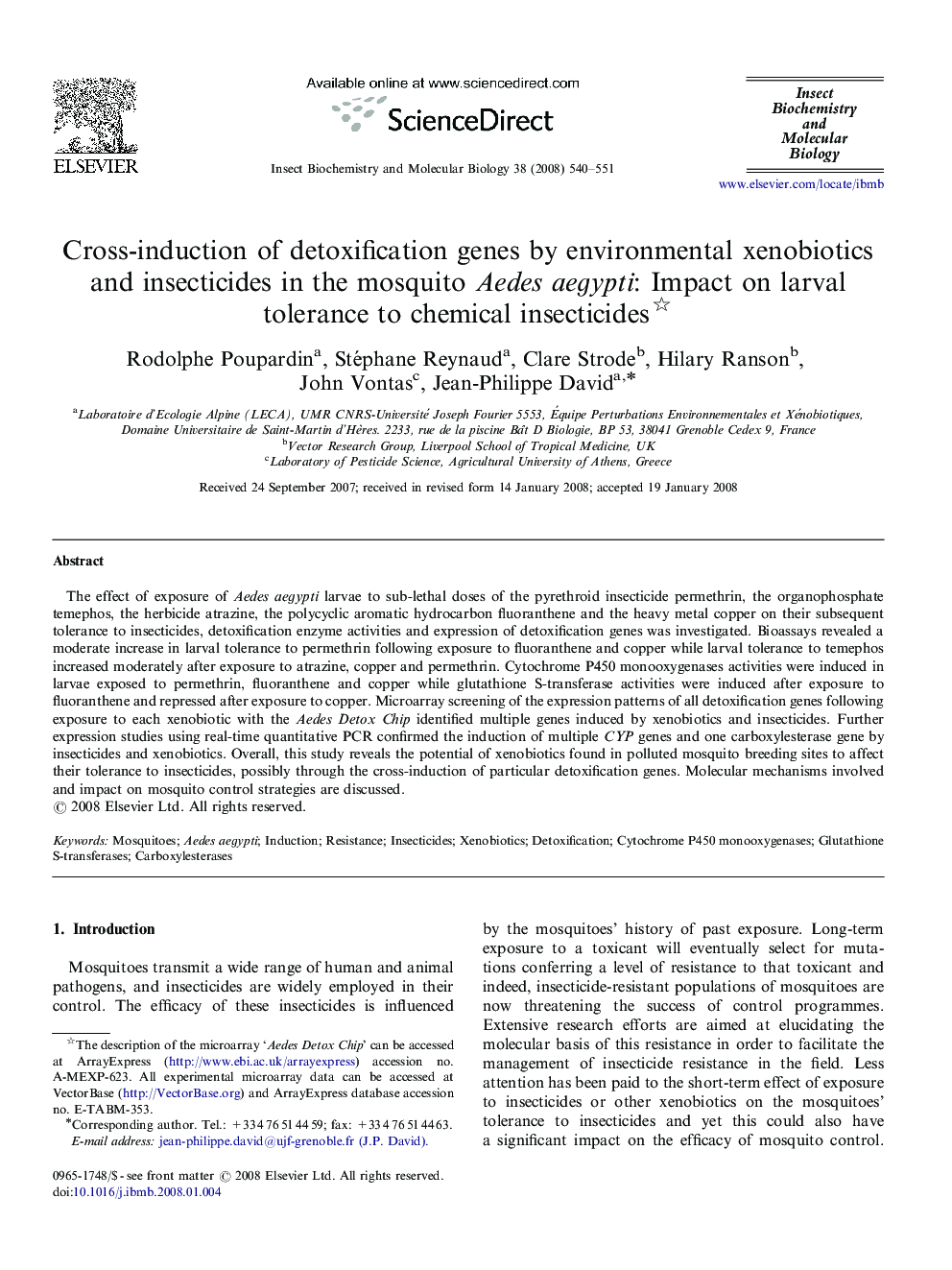| Article ID | Journal | Published Year | Pages | File Type |
|---|---|---|---|---|
| 1982722 | Insect Biochemistry and Molecular Biology | 2008 | 12 Pages |
The effect of exposure of Aedes aegypti larvae to sub-lethal doses of the pyrethroid insecticide permethrin, the organophosphate temephos, the herbicide atrazine, the polycyclic aromatic hydrocarbon fluoranthene and the heavy metal copper on their subsequent tolerance to insecticides, detoxification enzyme activities and expression of detoxification genes was investigated. Bioassays revealed a moderate increase in larval tolerance to permethrin following exposure to fluoranthene and copper while larval tolerance to temephos increased moderately after exposure to atrazine, copper and permethrin. Cytochrome P450 monooxygenases activities were induced in larvae exposed to permethrin, fluoranthene and copper while glutathione S-transferase activities were induced after exposure to fluoranthene and repressed after exposure to copper. Microarray screening of the expression patterns of all detoxification genes following exposure to each xenobiotic with the Aedes Detox Chip identified multiple genes induced by xenobiotics and insecticides. Further expression studies using real-time quantitative PCR confirmed the induction of multiple CYP genes and one carboxylesterase gene by insecticides and xenobiotics. Overall, this study reveals the potential of xenobiotics found in polluted mosquito breeding sites to affect their tolerance to insecticides, possibly through the cross-induction of particular detoxification genes. Molecular mechanisms involved and impact on mosquito control strategies are discussed.
